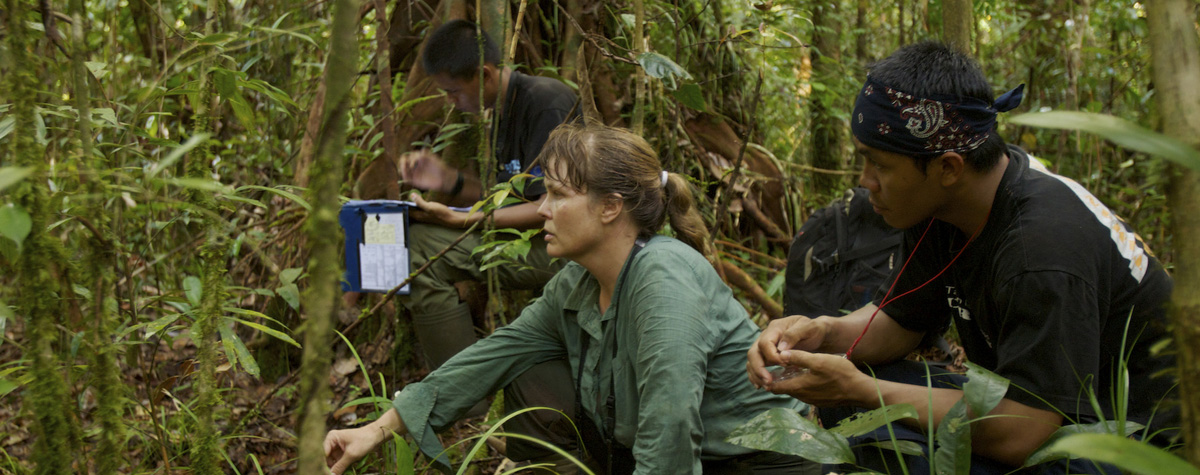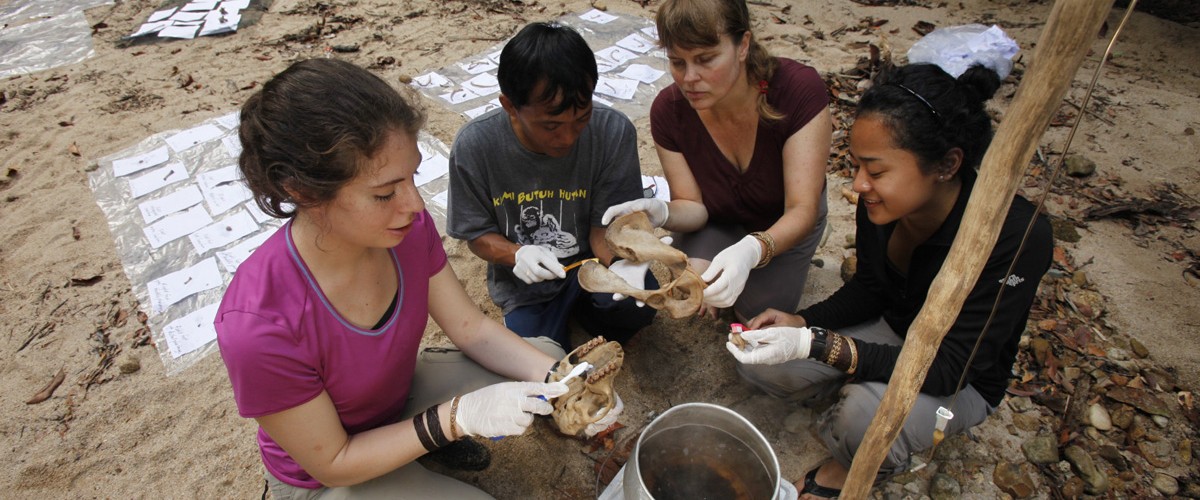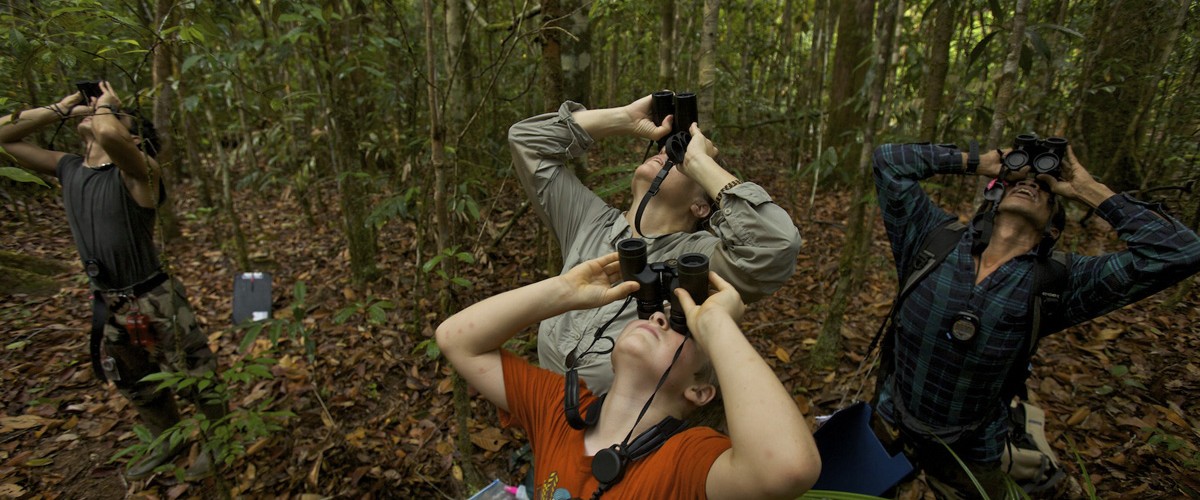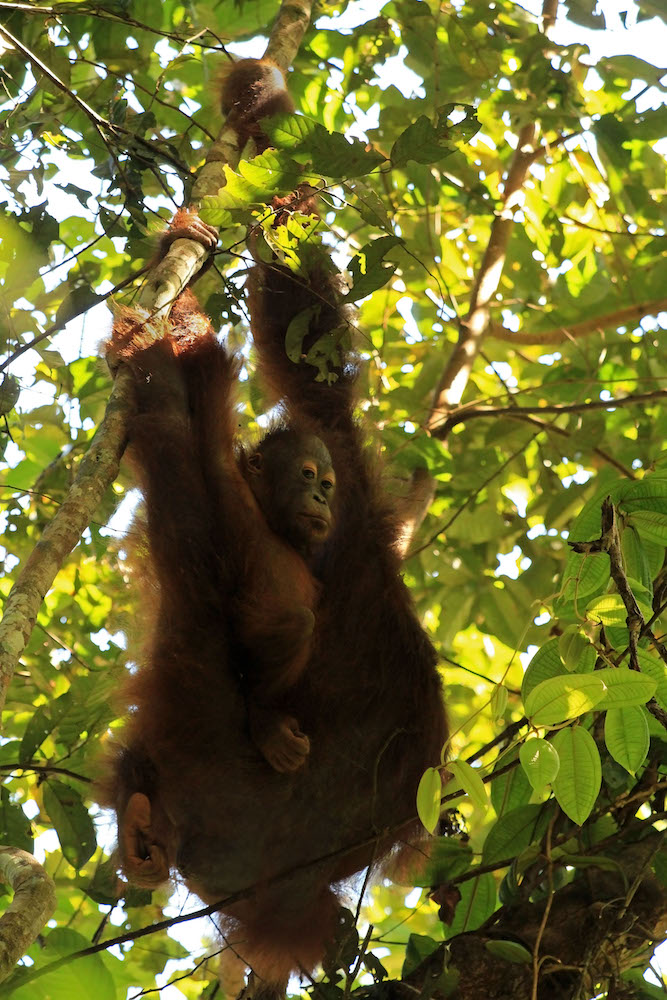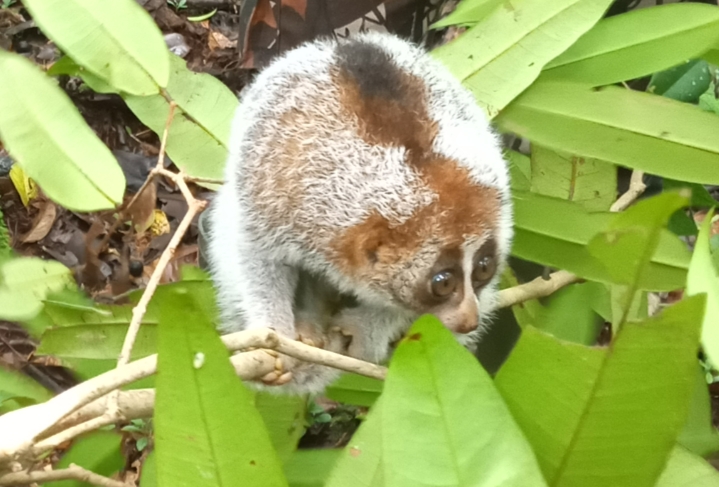By Suharto, Field Research Assistant
Hello my name is Suharto, but people call me Toto for short. I come from Matan Jaya Village, in the upper reaches of West Kalimantan. I work for the Gunung Palung Orangutan Conservation Program (GPOCP/Yayasan Palung). My job is as a field research assistant, where I work in collaboration with the Gunung Palung National Park Bureau (BTN-GP) to conduct orangutan research at the Cabang Panti Research Station (CPRS). I have been in this position for 9 years now, and am so happy to work at CPRS because I can learn about orangutan conservation, recognize orangutan behaviors, and know about different types of orangutan foods.

On September 2, 2021, my fellow research assistant friends and I carried out our usual work following orangutans. On this day, we were also accompanied by two Gunung Palung National Park Rangers and one visiting student researcher. We were following a mother orangutan named Bibi and her offspring named Bayas. I am very familiar with these two orangutans as we follow them frequently. Bayas is now 6 years old so travels away from his mother.
We followed Bibi and Bayas from the morning when they woke up in their nest until they went to sleep in the late afternoon. For most of the day our data collection went on as usual, observing the orangutans and recording their daily activities of eating, resting and travel. At 11:55am Bibi and Bayas traveled to a very large, tall tree to rest. Because the tree was so big, it was difficult for me to see the orangutans, even when I walked around to find a better vantage point. Next, I walked directly under the tree to look up for the orangutans and suddenly a slow loris fell to the ground right in front of me!
I watched as the slow loris walked away from me and back up a small tree. Suddenly Bibi started to descend from the tree she was in and approached the slow loris, making a kiss squeak vocalization with her mouth. Immediately I thought that Bibi might try to harm the slow loris. Bibi continued to move towards the slow loris as it continued up the tree. We were so surprised when Bibi quickly grabbed the slow loris with her left hand. She brought it towards her chest, grasping it in her arm, and continued to climb the tree.
We continued to observe this social interaction between the two species, watching closely with binoculars. I was so happy since this was unlike anything I’ve ever seen at CPRS. Bibi continued holding the slow loris as she sat down on a tree branch, almost as though it was her own baby orangutan that she was hugging closely. Next Bibi started feeding on some leaves while the animal was still in her grasp.
After a few minutes, we realized the slow loris began to bite Bibi’s hand that she was using to keep it in her grip. This shocked and hurt Bibi, who then reflexively flung her hand away from the slow loris, who was then thrown back to the ground. The slow loris immediately raced up a different tree to take shelter. Bibi then went back over to Bayas who had been a few meters away, and the two orangutans went back to their usual activities. My fellow assistants and I then continued following the orangutans for the rest of the day until they made their night nests and went to sleep.
I still feel very lucky to have experienced this interaction between an orangutan and slow loris – something which is very rarely encountered, and the first case observed by researchers in CPRS. I always hope to continue learning new things in my work as a field research assistant, understanding new things about orangutans, their habitat and other fauna of the forest.
————-
Management of Cabang Panti Research Station is conducted by the Gunung Palung National Park Office (BTN-GP) in collaboration with GPOCP/YP. Scientific research is carried out in conjunction with the Universitas Nasional (UNAS) and Boston University.
